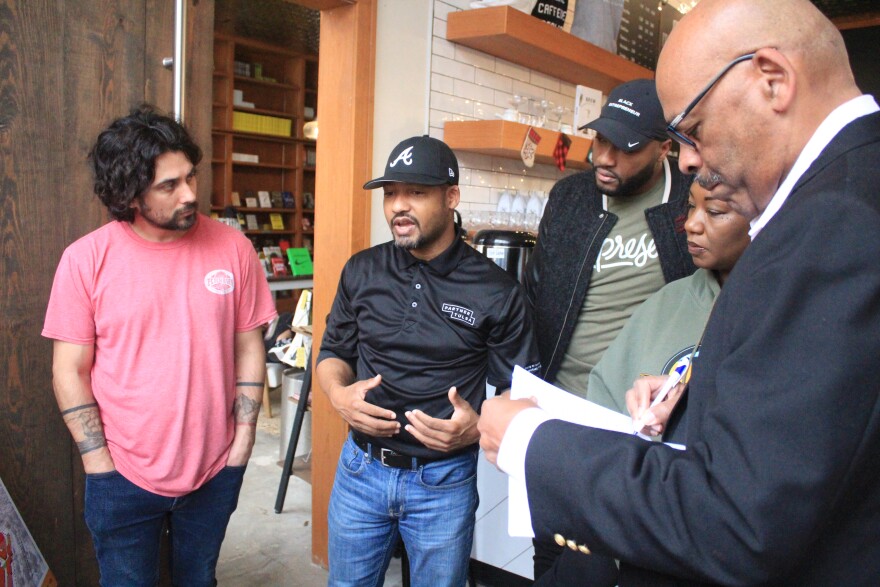The Kirkpatrick Heights Greenwood neighborhood master plan is in full swing after two meetings over the last week.
Facilitated by the city of Tulsa, the master plan to equitably revitalize the historic Black neighborhood aims to specifically develop three publicly-owned areas that collectively comprise 56 acres. The plan has undergone roughly 14 months of meetings with residents and stakeholders in the area to communicate the vision and implement feedback.
On Saturday, the plan committee held an open house for residents as the formal end to its 14-month planning process. City council then unanimously approved the plan at its meeting Wednesday night.
Now that the plan has been approved at a city level, the plan’s leadership committee will now form a governing body and begin to implement the ideas discussed over the planning period, committee members said.
“We have a plan — it’s now, ‘How do we get there? How do we do something with it? How do we make sure that it moves?’” said Jonathan Butler, Senior Vice President of community development for Partner Tulsa.
Known as “Black Wall Street,” the neighborhood surrounding Greenwood Avenue was arguably the most prosperous Black community in the United States until a white mob razed the neighborhood in 1921 and killed scores of its residents.
Since the massacre, other obstacles like Highway 412 have kept the neighborhood from fully returning to what it was.
Plan co-chair Lana Turner-Addison said the plan for the neighborhood includes language that ensures Black residents are able to prosper. She also said the the governing body that will be formed will act as a check to ensure this.
Butler said it was important to include older members of the community in the planning process.
“These are the stalwarts, the people of this community. They have been doing the work in this community for decades. So a part of ‘What does this community want to see, and how do they want this property to be impactful,’ is to really have their voices represented in all parts of the process,” he said.
The three areas the plan will develop are:
- The Juneteenth site behind Vernon AME Church, which will be developed into “Greenwood Plaza”
- A site close to Emerson Elementary School
- “The Stitch” — a site close to Langston University Tulsa and Oklahoma State University Tulsa
In addition to the older residents, Turner-Addison said younger residents have also given input for the master plan. She said trails were added to the plan after they spoke up.
Damon Jackson, who recently returned to Tulsa with his wife and two girls after living in Houston for 10 years, said he wants to see the neighborhood connect to downtown Tulsa. He said many of the streets “kind of break off” before they reach the neighborhood.
“It doesn’t allow people in downtown to actually come and be able to, I guess, invest in the area. So having retail shops, of course having real connectivity with the economic center of Tulsa,” Jackson said.
Butler said the goal of the project is ultimately to center the community at the heart of the revitalization efforts.
“The vision statement itself for the plan really talks to trying to honor and recognize the history of place, the culture and legacy, but also crafting something new for a vision of renewal and what can possibly be here in north Tulsa,” he said.



